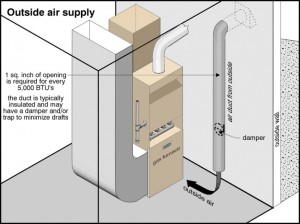EPA does not recommend sub slab suction as the only way of reducing radon levels in your home.
In a real estate transaction there is limited time to test and mitigate radon concerns. Time is of the essence and contractual agreements must be completed. So typically when radon levels exceed the EPA guideline of 4.0 picocuries, buyers will demand a sub slab suction pipe and fan be installed in the home. This is an approved and proven method of reducing radon levels, but it is also the most expensive.
Radon gets into our homes when there are cracks and openings in the below grade foundation and floor slab or when the outside air pressure exceeds the interior building pressure. Understanding this opens up a savvy Realtor or homeowner to alternative, less costly, methods of mitigating high radon concentrations.
Try these before spending a lot of money:
Step 1. Get out a caulking gun; caulk all cracks in the floor and walls. Pay particular attention to the connections between the floor and walls, beam posts, sump basket, plumbing pipes and drains.
Step 2. Get on a ladder; make sure the top of the foundation walls do not have any cracks or open cores.
Step 3. If you have a sump basket, seal the cover shut and caulk the edges.
Step 4. Make sure there is no exposed dirt in the basement or crawl space. If so, those areas would need to be covered with 6 mil poly and the seams taped.
Step 5. Open furnace supply air registers in the basement and close off the returns. Turn the fan switch on your thermostat from auto to on. This continually circulating air will pressurize the basement.
Step 6. Re-test
This may be a good reason to have your home tested for radon before you put it on the market. It may save you some aggravation and money!
For more about Radon and other hot topics ‘Like’ us on Facebook!
Doug Hastings
MN Home Inspector, Minneapolis & St. Paul
ASHI certified inspector, ACI
Kaplan University, Home Inspection Lead Instructor
Rob ‘Pops’ Leslie
Kaplan Professionals, Retired




